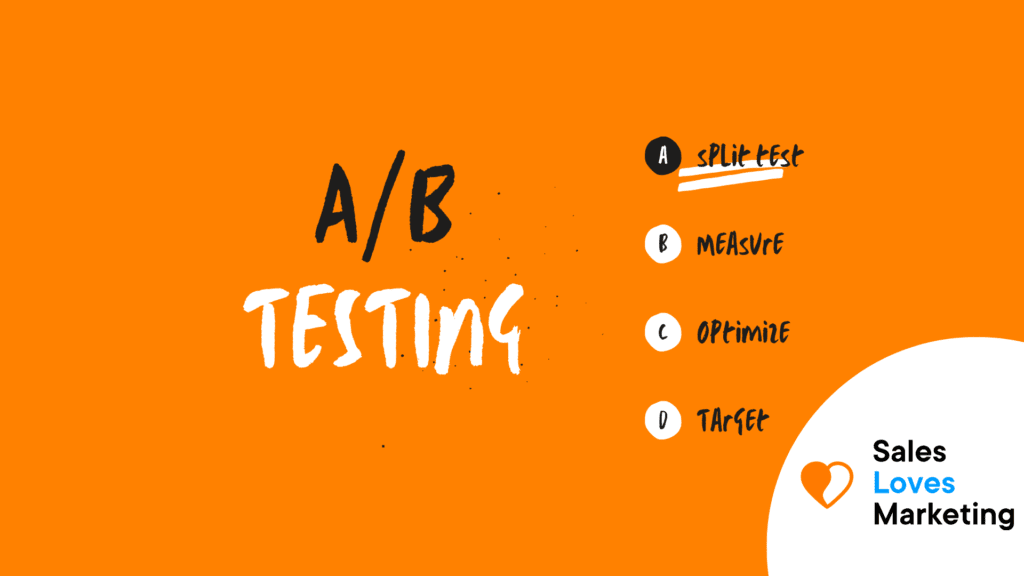What is A/B Testing?
A/B testing is the process of comparing two versions of a web page, email, or other marketing assets to measure the difference in performance and find out which one produces the most conversions.
What are The Elements of an A/B test?
Some of the items that can be tested in an A/B Test are:
- The sizes, location, and colors of the CTAS.
- The body of the description of the products.
- The titles of the products.
- The size of a form
- The types of fields in a form.
- The visual composition of your website.
- How product prices and offers are displayed.
- The images on the product pages.
- The amount of text on a website.
What are The Types of Tests?
Split Test:
This is a marketing test method whereby a reference control sample is compared to an entirely different variation from the same sample to increase response rates. In this method, a test is done in two different versions of the page or website. It is not used to determine whether to keep or remove a single item. It is used more for website design decisions.
A/B Testing:
This is a marketing testing method whereby a reference control sample is compared to various tests of the same variable performed on the same sample to increase response rates. In this test method, only small changes will be made to the original version, such as highlighting words, changing the shape or color of a button.
Multivariate testing:
It is a process through which more than one web page element can be tested in a real-time environment. It can be thought of as multiple A/B tests done on one page at the same time.
Why is A/B Testing Important in Digital Marketing?
- The testings help solve the common annoyances that visitors might get while browsing the site or web page: it can be difficult to find the call to action button like buy now, request a demo, a confusing page, etc. All of this translates into poor user experiences, which increase friction and eventually impact conversion rates. The use of the data collected through A/B tests, helps to solve the weak points of the visitors.
- They help obtain a high ROI by taking full advantage of existing traffic without consuming resources in new traffic, since changes, even minimal, can increase conversions.
- They help reduce the bounce rate, which is one of the most important ways to determine the website’s performance. Through A/B testing, different variations of elements on a website can be tested until the best possible combination is achieved, which will achieve a better user experience and reduce the bounce rate.
- Changes to a site or web page can be made with little risk and without jeopardizing the current conversion rate, using A/B testing, instead of making changes to the entire website’s design. Resources can be directed to maximum performance with little modification, resulting in higher ROI. Testing and then making changes can make the result safe.
- A/B tests are used to make changes to the website optimally, from changing a CTA text, a change of colors to the pages, and even a total renewal of the website.
How To Do A/B Testing?
To properly perform an A/B test, it should be divided into three phases:
Before testing:
- Only one variable should be chosen at a time to test and measure its performance.
- Identify and choose a main objective or metric, which will be the dependent variable.
- With the above information, an original version or “control” must be configured, and from here, a variation or “challenger” must be created, which is the email, web page, or destination page that will be tested against the “control”.
- The sample groups should be separated into equal parts and at random.
- If necessary, define the size of the sample to use.
- Analyze and decide the importance that the results should have to argue the choice of one variation over another.
- It should be ensured that only one test is run at a time in any campaign to not complicate the results.
During the tests:
- Use an A/B testing tool, such as those provided by Google Analytics or Hubspot.
- Both versions must be tested simultaneously, except in cases where the factor being tested is time itself.
- Allow sufficient time for A/B testing to make the sample size meaningful and the data produced is useful. Theoretically speaking, do not limit the time for collecting results.
- Ask for information and comments from real users. Although A/B tests are based primarily on quantitative data, this will not necessarily help understand customer decisions, unlike qualitative data collected while testing (through surveys or surveys).
After testing:
- Study the metric of the main objective.
- Evaluate the results and their statistical significance to see if a change is justified. (an A/B testing calculator can be used)
- Take actions according to the results.
- Prepare more A/B tests to continue optimizing.
